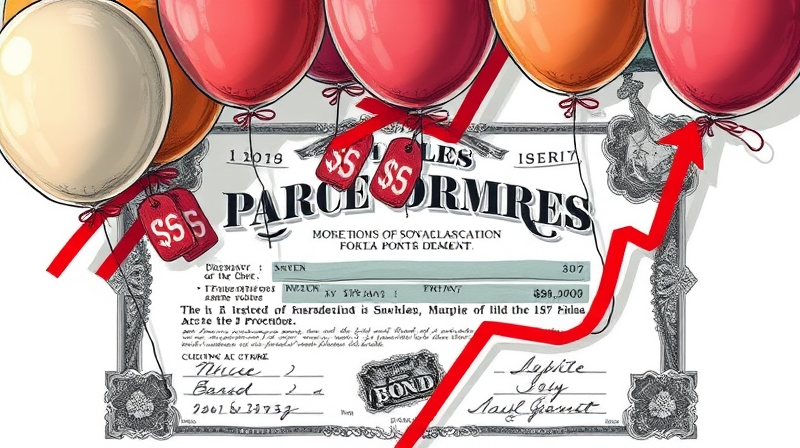
Fixed income investments are often hailed as a bastion of stability, delivering predictable income and capital preservation. Yet, in environments where consumer prices steadily climb, erosion of real bond returns becomes an increasingly urgent reality. Investors may bask in the comfort of coupon payments, only to discover that rising expenses have quietly consumed the purchasing power behind those very returns. Understanding and addressing inflation risk in these portfolios is not merely an academic exercise; it is a practical imperative for anyone seeking to maintain wealth in uncertain times.
At its core, inflation risk refers to the unique threat that rising prices pose to nominal income streams. While a bond might pay a fixed 3% annually, that rate loses luster if consumer goods and services appreciate by 4% in the same period. Potential for rising prices can inexorably diminish the real value of both interest and principal, undermining the very purpose of conservative allocations. By quantifying expected inflation against coupon yields and adjusting for real return targets, investors can gauge whether their portfolios are positioned to weather the invisible tax of inflation.
Historically, periods of sustained inflation have coincided with underperformance in traditional bond benchmarks. During spikes in headline or core inflation, nominal bonds have struggled as markets reprice yields to reflect decreased purchasing power. Monitoring indicators such as the Consumer Price Index, breakeven inflation rates derived from Treasury Inflation-Protected Securities, and forward guidance from central banks offers a more nuanced perspective than simply tracking nominal yields alone.
The aftermath of the pandemic, shifting trade policies, and geopolitical tensions have combined to produce steep volatility in bond markets. Long-term U.S. Treasury yields climbed above 5% in early 2025, levels unseen since 2007, as deficits swelled and fiscal spending accelerated. Meanwhile, the ICE BofA MOVE Index—an emblem of Treasury market volatility—spiked dramatically in April 2025, revealing the market’s sensitivity to rapid policy adjustments. Although headline inflation has shown signs of cooling, persistent or “sticky” inflation pressures remain a specter that could upend yield expectations and capital values alike.
Despite consumer price gains moderating from multi-decade highs, the Federal Reserve has emphasized data dependency and caution. Policy statements suggest a willingness to hold rates at 3–4% if inflation trajectories stall above the 2% target. Should core services or wage-driven costs regain momentum, the Fed could delay or even reverse planned rate reductions. Investors must balance the prospect of modest rate relief against the possibility of a prolonged plateau in policy rates, all while recalibrating expectations for real yields in a less predictable monetary landscape.
Dragons reawakened by fiscal stimulus and geopolitical uncertainty mean that the path to sub-3% rates is not guaranteed. For portfolio architects, this implies keeping contingency plans at the ready, with active portfolio management strategies that allow for rapid adjustments in duration, sector concentrations, and credit exposures as inflation data evolves.
Bonds exhibit an inverse relationship between price and yield: when inflation expectations climb, yields rise, driving prices down. A bond’s sensitivity to rate changes is captured by its duration—the higher the duration, the greater the price swing for each 1% shift in yields. For example, a security with a duration of 5 might see roughly a 5% capital loss if rates tick higher by one percentage point. This mathematical relationship underscores the inherent trade-off between income stability and inflation vulnerability.
Furthermore, nominal coupons do not adjust with consumer prices. As headline and core inflation drift upward, each fixed dollar payment translates into fewer goods and services. Investors who ignore this dynamic risk experiencing a significant loss of purchasing power, even if nominal returns appear attractive on paper.
Each segment brings its own risk-return profile. Nominal Treasuries, while often considered risk-free, can deliver negative real yields when inflation exceeds coupon rates. Corporate bonds carry credit risk but may offer a buffer in tighter spread environments. Inflated currencies and volatile local rates can amplify both gains and losses in emerging debt. Meanwhile, TIPS and similar instruments directly embed CPI adjustments, although they may trade at higher yields relative to nominal equivalents.
Preserving purchasing power in a rising price environment demands a multi-pronged approach. Portfolio architects should consider direct inflation protection tools alongside traditional holdings. By shortening duration, diversifying across credit qualities and geographies, and blending in real assets, investors can build resilience against unexpected inflation shocks.
In crafting these strategies, investors should weigh costs, liquidity, and correlation dynamics. A tactical overlay of real assets and inflation-linked bonds complements the core fixed income allocation, helping maintain real yield targets throughout varied market cycles.
As we navigate the complexities of the 2024–2025 environment, staying vigilant against inflation risk is paramount. No single strategy guarantees protection; rather, a thoughtfully constructed, adaptable framework can safeguard purchasing power while pursuing stable income. By continuously monitoring economic indicators, consulting diverse data sources, and adjusting exposures proactively, investors can transform uncertainty into opportunity, ensuring that fixed income remains a reliable component of a balanced portfolio.
The era of complacency in bond markets is over. Embrace a holistic, forward-looking approach that recognizes inflation as a dynamic factor—not a static backdrop—and fortify your portfolio to withstand whatever the economic horizon may bring.
References













